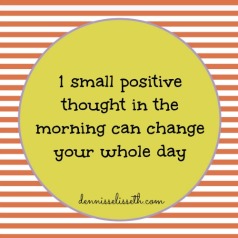
Blog Inspired Tweet: @agoscinski
On December 1, 2014, CBS Chicago’s news website posted an article titled “Teacher, CEO Advocates Arts Education In Chicago.” In the article the “Chicago Sun Times,” and Shakila Stewart are quoted defining and defending art teachers. The Chicago Sun Times states, “Arts teachers who were rescued from layoffs aren’t always spread out enough for students from diverse neighborhoods to utilize.” Therefore, there are many students in an educational system lacking an art program. With all of the new applications of art, there are certainly resources available to the students. As a college student studying education, I was able to observe a class in a low-income neighborhood. Though they had an art program, the other surroundings schools that did not. However, the surrounding schools still maintained a computer program, and because of new technologies and art applications the teachers could use the computers to implement an art program. “The internet links millions of people in new spaces that are changing the way we think and the way we form our communities.” (Turkle, page 3). So could our computers introduce art in a new way?

“My degree in theater and dance led to my desire to invest in the lives of children who had the gift of performance but whose parents just couldn’t afford to put them in a performing arts program,” explains Shakila Grigler Stewart, an art instructor. An art program gives students the ability to discover wha they enjoy, and what they are passionate about. Creativity, Imagination, and Artistic Abilities are not subjects in school. However, they can positively influence a student’s education. Just as student’s are taught to find their favorite books or subjects, they should also find their favorite type of art. Music, drawing, painting, acting, singing, they are interests that derive passion, and isn’t that what we want for our student’s?
“When they come to school they cannot focus on learning if these emotions aren’t let out in a positive way. Theater allows them to do that. Dancing allows them to be heard, and it gives them a way to express themselves in a way that maybe when they’re taking a test it might not.” (Stewart). Academic curriculums are constructed around producing well rounded and developed students. Art programs should also be viewed as an important step to the students educational career. “When they’re reading the scripts they’re learning literacy. It helps them with their comprehension skills and vocabulary words. I believe education and creativity make [students] become inventors for the future.” (Stewart). Can art be used as a new literary technology? “Students’ writing will be published writing, and it will be produced in genres and by processes that depart radically from the traditional ways writing has been practiced and taught.” (Porter, DeVoss, page 195). Though art is not the traditional way to teach student’s, it very well could be. With proper introduction and implementation art can become a new technology to education.









 “The media conglomerate is being careful to describe the initiative as learning and not educational,” due to “harshly criticized marketing claims tied to its Baby Einstein line.” (Barnes).
“The media conglomerate is being careful to describe the initiative as learning and not educational,” due to “harshly criticized marketing claims tied to its Baby Einstein line.” (Barnes).  zabeth Grace Saunders
zabeth Grace Saunders us–lack of clarity. This can be done by breaking down what you need to get done into the smallest of baby steps. “This is particularly helpful when you need to move a messy project ahead but can also work with more routine tasks where you notice a resistance to getting started.”
us–lack of clarity. This can be done by breaking down what you need to get done into the smallest of baby steps. “This is particularly helpful when you need to move a messy project ahead but can also work with more routine tasks where you notice a resistance to getting started.” ry summer. For him, writing is one of those happy discoveries that has helped him to “connect better with my purpose, my world, and myself.”
ry summer. For him, writing is one of those happy discoveries that has helped him to “connect better with my purpose, my world, and myself.” ions can also be our downfall. Emotions can prevent us from creating the reality we desire. If we believe we can do a task, the chances of it getting done increase immensely. The mind is a very powerful thing that many of us don’t realize the true potential of positive thought.
ions can also be our downfall. Emotions can prevent us from creating the reality we desire. If we believe we can do a task, the chances of it getting done increase immensely. The mind is a very powerful thing that many of us don’t realize the true potential of positive thought.

 When Turkle discussed computers as a technology, she said “allow us to cycle through cyberspace and real life, over and over. Windows allow us to be in several contexts at the same time.” (page 3). This introduces the main controversial aspect involving the computers influence on it’s users, and therefor the computer’s influence on students. The acceptance argument is “that the Internet and search engines had a mostly positive impact on student research skills, (…), such tools had made students more self-sufficient researchers.”
When Turkle discussed computers as a technology, she said “allow us to cycle through cyberspace and real life, over and over. Windows allow us to be in several contexts at the same time.” (page 3). This introduces the main controversial aspect involving the computers influence on it’s users, and therefor the computer’s influence on students. The acceptance argument is “that the Internet and search engines had a mostly positive impact on student research skills, (…), such tools had made students more self-sufficient researchers.”  (Richtel, page 2). Whereas the rejection argument is “that digital technologies were creating an easily distracted generation with short attention spans.” (Richtel, page 2). “Windows have become a powerful metaphor for thinking about the self as a multiple, distributed system. The life practice of windows is that of a decentered self that exists in many worlds, that plays many roles at the same time.” (Turkle, page 3). However an agreement can be made by both sides, students are easily distracted, which makes it difficult for teachers to captivate their attention, conscious effort, and constant engagement.(Richtel, pages 1-3). Dr. Christakis said “students saturated by entertainment media, were experiencing a supernatural stimulation that teachers might have to keep up with or simulate. The heavy technology use makes reality by comparison uninteresting.” (Richtel, page 4).
(Richtel, page 2). Whereas the rejection argument is “that digital technologies were creating an easily distracted generation with short attention spans.” (Richtel, page 2). “Windows have become a powerful metaphor for thinking about the self as a multiple, distributed system. The life practice of windows is that of a decentered self that exists in many worlds, that plays many roles at the same time.” (Turkle, page 3). However an agreement can be made by both sides, students are easily distracted, which makes it difficult for teachers to captivate their attention, conscious effort, and constant engagement.(Richtel, pages 1-3). Dr. Christakis said “students saturated by entertainment media, were experiencing a supernatural stimulation that teachers might have to keep up with or simulate. The heavy technology use makes reality by comparison uninteresting.” (Richtel, page 4).



